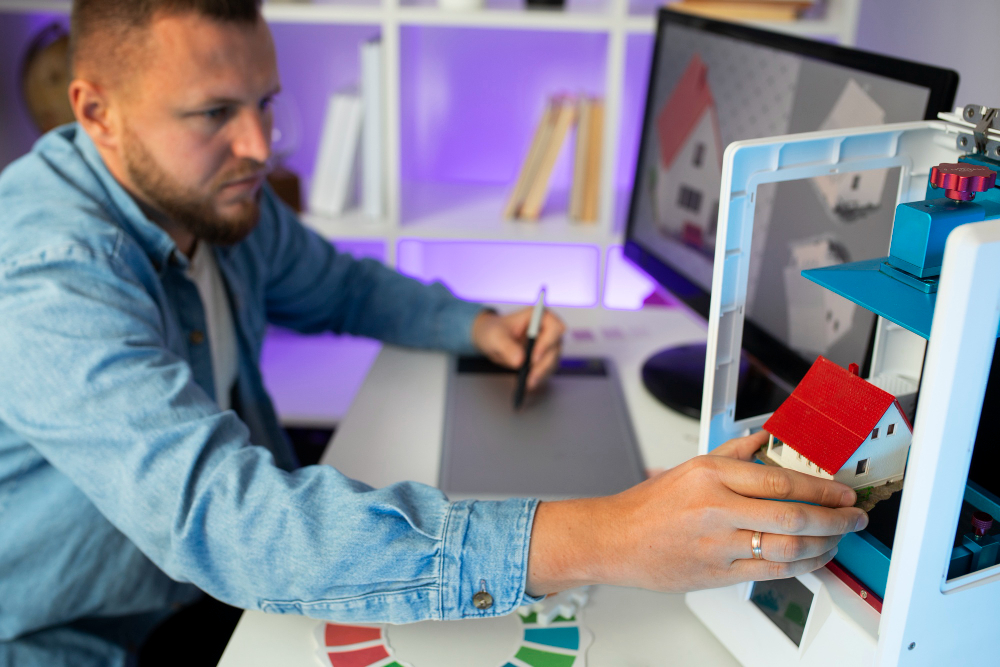How to use a 3D Printing Slicer Software ?




When learning how to use a slicer for 3D printing, the process may seem complex at first, but it becomes straightforward once you understand the steps. A slicer is the bridge between your digital design file and the actual 3D print. Without it, your printer would have no clear instructions to follow. By working with a 3D printer slicer, you transform your model into a precise set of directions, known as G-code, that your machine can read and execute.
This guide walks you through every stage—from setting up your 3D printer slicer software to preparing, adjusting, and exporting your design. Whether you are new to 3D slicer software or refining your workflow, understanding these steps ensures better print quality and smoother results.
The first step in mastering how to use a slicer for 3D printing is selecting the right tool. Options range from open-source platforms to proprietary programs tailored for specific machines. What matters most is that your 3D printer software is compatible with your printer and material requirements.
Once you install the 3D printer slicer software, configure it by adding your printer model. If it isn’t listed, you can manually enter specifications such as build plate size, nozzle diameter, and print height. This ensures the slicer accurately interprets your printer’s capabilities.
Another important part of the setup is choosing or creating a material profile. Most 3D slicer software comes with ready-made settings for common filaments like PLA, ABS, or PETG. However, you can customize profiles to optimize print temperature, flow rate, or cooling for advanced materials using a filament tracking system.
With your slicer ready, it’s time to bring your design into the software. Importing your model—usually in.STL, .OBJ, or .3MF format, is as simple as dragging and dropping it into the 3D printer slicer software window.
Once the model loads, placement is crucial. For stability and adhesion, orient the largest, flattest surface on the build plate. The slicer gives you tools to rotate, scale, or reposition the object. If you’re printing multiple items, you can arrange them together, and the 3D slicer software will calculate the most efficient path for printing them simultaneously.
Taking time here prevents wasted filament and failed prints later. Proper orientation also reduces the need for excessive supports, leading to cleaner, more efficient results. For complex assemblies, 3D modeling software can help refine designs before slicing.
The heart of learning how to use a slicer for 3D printing lies in mastering print settings. These parameters directly impact quality, strength, speed, and success.
Some designs require additional structures to print properly. 3D printer slicer software offers:
By experimenting with these parameters, you’ll see how the 3D slicer software balances precision and efficiency.
After the settings are finalized, the slicer creates a virtual preview of your print. This allows you to check toolpaths, supports, and infill patterns before committing material and time. Reviewing this step carefully is key to avoiding errors.
When satisfied, click “Slice” or “Export” to generate the G-code. This file contains every movement and temperature command your printer needs. Transfer it to the machine via SD card, USB stick, or wireless connection. The printer now has exact instructions from your 3D printer slicer to build the model layer by layer, which you can also monitor using 3D printer monitoring software.
Understanding how to use a slicer for 3D printing is essential for consistent, reliable outcomes. While 3D modeling defines what you want to create, slicing dictates how it will be built. Small changes—such as infill density, support placement, or temperature—can mean the difference between a failed print and a professional-quality part.
A strong grasp of 3D printer slicer software also opens the door to more advanced techniques, like multi-material printing, optimized support strategies, or rapid prototyping. For hobbyists, this means smoother creative projects. For professionals, it leads to greater efficiency, accuracy, and reduced material waste.
A 3D printer slicer is more than just a tool; it’s the command center of the entire printing process. By learning how to use a slicer for 3D printing, you take control of every detail, from design orientation to temperature calibration. Mastery of 3D slicer software ensures your prints are strong, precise, and aligned with your creative or functional goals.
Whether you’re printing your first model or managing complex multi-part assemblies, investing time in your slicer skills pays off in print quality and reliability. With practice, you’ll turn digital designs into tangible results with confidence and consistency.

Erfahren Sie mehr über 3DPrinterOS — die vertrauenswürdigste 3D-Druck-Management-Software für Hochschulen, Unternehmen und OEMs. Füllen Sie dieses Formular aus, um mit unseren Experten in Kontakt zu treten.
Verwalte den Arbeitsablauf und die Berechtigungen für deine Benutzer
Teilen Sie Dateien und 3D-Drucker mit Benutzergruppen
Steuern Sie Ihre 3D-Druckerflotte über einen Browser
Cloud Slicer und Toolpath Viewer
Buchen Sie jetzt Ihr personalisiertes Assessment und erhalten Sie Ihre kostenlose Testversion.